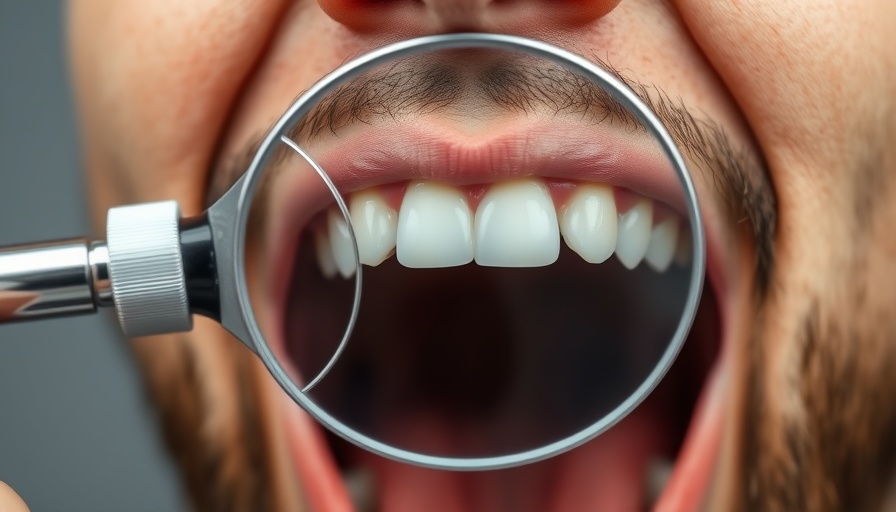
Unveiling the Long-Term Effects of Smoking on Oral Health
Recent research has illuminated a concerning reality about the long-term impact of smoking on dental health. Smoking not only significantly affects the lungs and overall health, but it also leaves an indelible mark on the teeth, as outlined in the latest findings. This revelation is crucial for those considering smoking or trying to quit, as it emphasizes the extensive damage smoking can cause beyond systemic health issues.
What's Happening Under the Surface?
Studies show that the habitual use of tobacco products can lead to discoloration of the teeth, attributed primarily to the tar and nicotine embedded in tooth enamel. When these harmful substances are inhaled, they travel through the bloodstream, eventually making their way to the gums and teeth, where they can accumulate over time. Regular exposure yields a change that is not only aesthetic; it can signal underlying dental conditions.
The Science Behind Teeth Discoloration
In a recent analysis conducted by dental researchers, it was reported that the visible effects of smoking can result from a combination of physical and chemical changes in the tooth structure. The teeth’s porous nature allows for the absorption of nicotine and tar, leading to a noticeable darkening over the years. Furthermore, studies indicate that smoking can diminish saliva production, which limits natural teeth cleaning processes and enhances the risk of dental plaque accumulation.
Counterarguments and Diverse Perspectives
While the overwhelming evidence points to negative outcomes for smokers, some argue that genetics and diet also play pivotal roles in dental health. It is essential to recognize that not all smokers will experience the same level of dental deterioration. Factors such as personal oral hygiene practices and genetic predisposition to gum disease can significantly influence outcomes, demonstrating that smoking is a contributing factor rather than the sole cause of oral issues.
Practical Insights: Steps Towards Healthier Teeth
As smoking continues to be a major public health concern, individuals looking to mitigate dental damage may consider several actionable steps. These include quitting smoking, implementing a rigorous oral hygiene routine, and regularly visiting a dentist for professional cleanings and check-ups. Utilizing products specially formulated to combat yellowing can also aid in restoration efforts, showcasing that while the damage is significant, restoration remains possible.
The Social Impact of Smoking on Dental Health
The visibility of dental discoloration due to smoking may also contribute to social stigma surrounding smokers. It is not just health; it is an element that affects personal perception and social interactions. Understanding these aspects emphasizes the need for comprehensive smoking cessation programs that address both the health and cosmetic concerns of potential quitters.
Elevating Awareness: What to Share with Others
Information sharing within communities plays a crucial role in combating smoking-related dental issues. Healthcare providers and educators should focus on communicating the risks associated with smoking—not just through health channels but also by engaging in social forums where those considering smoking can hear firsthand accounts from former smokers about the long-term effects of their once-habitual behavior.
Conclusion: The Imperative of Educating on Smoking's Effects
Ultimately, understanding how smoking leaves a lasting mark on teeth is vital not only for personal health decisions but for supporting broader public health initiatives. As we move forward, emphasizing the connection between smoking and oral health can empower individuals to make informed choices and foster preventive measures.
 Add Row
Add Row  Add
Add 




Write A Comment